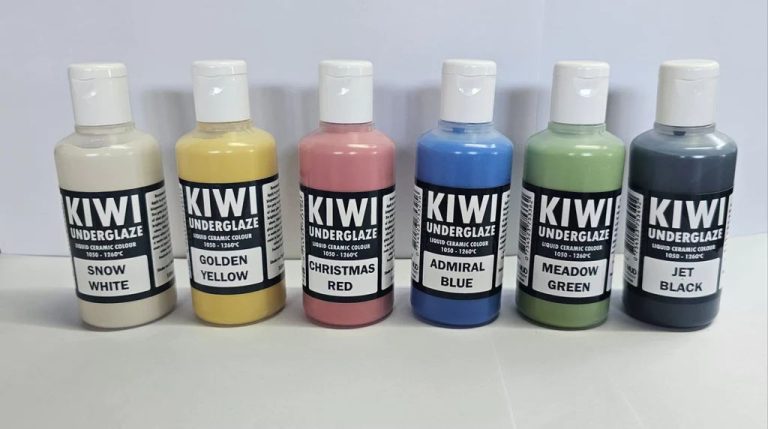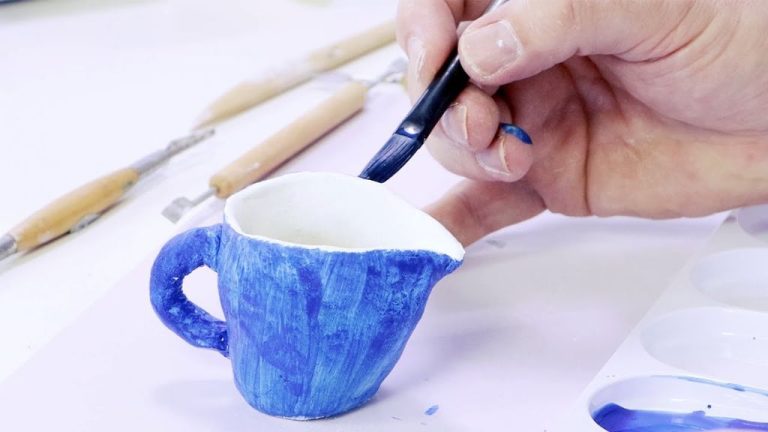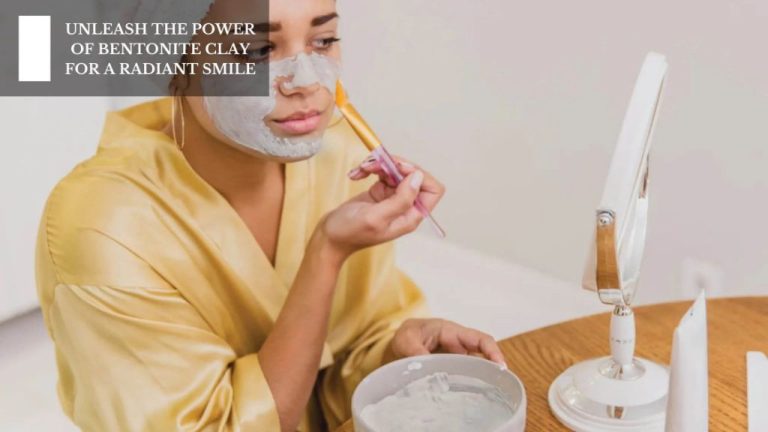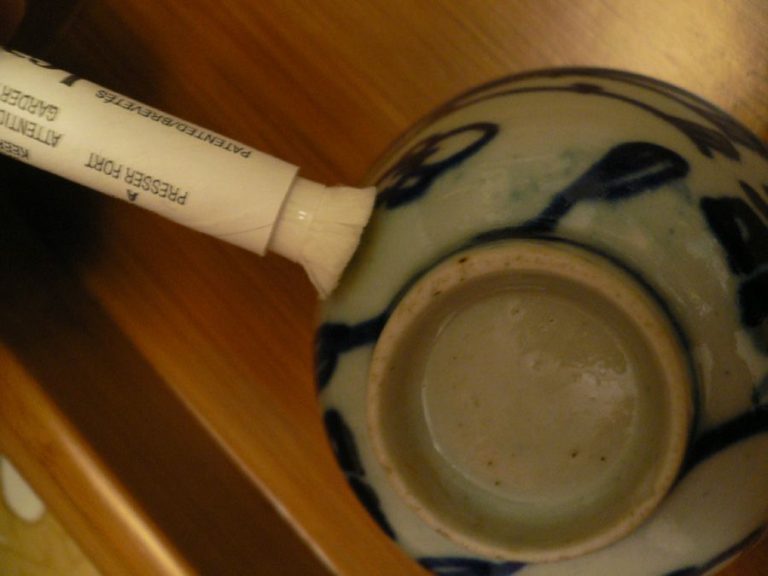Can I Use Modeling Clay For Sculpture?
Modeling clay, also known as plasticine or clay dough, refers to any malleable, non-drying oil-based modeling compound that can be easily shaped and molded by hand. It is made from a mixture of minerals, oils, and waxes that remain soft and pliable at room temperature (Modelling clay). Modeling clay is popular for sculpting, molding, and crafting as it does not dry out like natural clay and keeps its form when untouched. It also does not harden when left in the air or oven baked.
Sculpture is the art of creating three-dimensional forms and figures using different materials and techniques. Clay is one of the most popular and versatile mediums for sculpture. Sculptors mold, shape, and form clay into endless creations from realistic human forms to abstract shapes. The malleability of modeling clay makes it an ideal material for sculpting a variety of figures and forms (Modelling clay).
Types of Modeling Clay
There are three main types of modeling clay that can be used for sculpture:
Oil-based Clay
Oil-based clays, like plasticine, are made from oils, waxes and non-drying clay. They remain soft and pliable even when not being worked with. This makes oil-based clays a good choice for sculpting fine details that need to be blended and smoothed. However, oil-based clays are messy and never fully harden, so the sculptures are not permanent. Common brands include Plasticine, Van Aken Plastalina and Roma Plastalina.
According to https://www.temu.com/modeling-clay-for-sculpting-s.html, oil-based clays are a popular choice for modeling and sculpting.
Water-based Clay
Water-based clays use water as a binder instead of oil. They have a smooth, doughy texture when wet that becomes stiff and hard when dry. Water-based clays can be dried out and re-wetted later for reuse. They are easy to work with and good for sculpting basic shapes. Common brands are Activa Air-Dry Clay and Crayola Model Magic.
Polymer Clay
Polymer clays are made from plastic polymers like PVC mixed with fillers and coloring. They have a soft, pliable texture and harden when baked at low temperatures. Polymer clays keep their shape when hardened, allowing for detailed durability. Sculptures made from polymer clay can have very fine detail and take on realistic colors. Popular brands include Sculpey and Fimo.
Properties of Modeling Clay
Modeling clay has several unique properties that make it ideal for sculpture and craft projects.

Plasticity refers to a clay’s ability to be molded and shaped without cracking or crumbling. A clay with good plasticity can be stretched, twisted, squished, or rolled to create different forms. Modeling clays like polymer clay have high plasticity.
Workability describes how easy a clay is to handle and manipulate. A very stiff clay can be difficult to form detailed shapes with. Clays with good workability are smooth, pliable, and responsive to hand movements.
Softness determines how hard or soft the finished clay sculpture will be. Softer clays don’t fully harden when cured so the sculptures have some flexibility. Harder clays create rigid, inflexible finished pieces.
Drying time is how long it takes for the moisture in the clay to evaporate. Some clays can be worked with for hours before drying while others set up more quickly. Knowing the drying time is useful for gauging how much time there is to work.
Sculpture Techniques with Clay
There are four main techniques used in clay sculpture: additive, subtractive, modeling, and armatures. Each technique offers distinct advantages for achieving certain textures, shapes, and styles in sculpture.
The additive technique involves gradually building up the sculpture by adding more clay. This allows the sculptor to work freely and intuitively, without being restricted by a predefined shape. A framework or armature can be used for support and proportional guidance. Additive techniques lend themselves well to abstract, freeform sculptures. Clay Sculpture Techniques and Tips
Subtractive sculpture starts with a solid block of clay and removes material to reveal the form within. This requires more planning and vision ahead of time. Subtraction using manual tools or a pointing machine achieves an angular, faceted look. Subtractive techniques work for geometric abstract sculptures.
The modeling method is a combination of additive and subtractive. Clay is pinched, coiled, smoothed, scraped, and kneaded to achieve a form. Modeling allows fluid, organic sculptures with refined details. Natural subjects like figures and animals are often sculpted using modeling.
Finally, armatures provide rigid internal support for a clay sculpture. Wire, wood, mesh, and other materials make strong, proportional frameworks to build upon. Armatures help sustain the weight of large or complex clay sculptures. Realistic human figures are commonly sculpted over armatures.
Clay Sculpture Methods
There are several common methods used in clay sculpture:
Coiling
Coiling involves rolling out “snakes” or coils of clay and stacking or attaching them together to build up a sculpture. This method allows good control over the shape and is often used for making pots. According to artstudiops59.weebly.com, coiled pieces can then be smoothed together using water and tools.
Slabs
The slab method involves rolling out flat pieces or slabs of clay and cutting shapes to construct the sculpture. The slabs can be applied to an armature or framework. This is useful for making free-standing sculptures. Slabs allow bigger pieces to be made than coils.
Pinch Pots
Pinch pots are made by pinching and shaping clay with the fingers and thumbs only. It’s great for making small sculptures and containers. Pinch pots can also be used as the basis for more elaborate sculptures.
Casting
For casting, liquid clay is poured into a mold and allowed to harden. Once hardened, the clay maintains the shape of the mold. This allows duplication and intricate shapes. Casting slip, which has extra water content, is often used.
Clay Sculpture Tools
There are many specialized tools used for sculpting with clay. The main types of clay sculpting tools include:
Modeling Tools
Modeling tools like sculpting knives, spatulas, and wooden sticks allow you to shape, smooth, carve, and detail the clay. Some key modeling tools are:
- Clay shapers with silicone tips for smoothing
- Metal sculpting knives for cutting and carving
- Wooden sculpting sticks for detailing
- Metal ribbing tools for making lines and textures
Loop Tools
Loop tools have wire shaped into loops on the end and are used for scraping, smoothing, and contouring clay surfaces. Common loop tool shapes are triangular, round, and teardrop shaped.
Ribbers
Ribbers have a serrated edge for creating texture and details. They come in different shapes like squares, rounds, and waves. You can press ribbers into the clay at different angles to make unique patterns.
Cutters
Clay cutters allow you to cleanly cut shapes out of clay sheets or blocks. Some have rolling blades, while others are shaped cutters for specific designs like circles, hearts, stars etc. Clay cutters give you precision and consistency.
Having the right specialized clay sculpting tools allows you to efficiently shape, add texture, cut, and refine your clay sculptures. Investing in quality tools helps ensure your creative vision translates accurately into the finished piece.
Finishing and Firing
Once a clay sculpture is complete, there are several finishing techniques that can be applied before firing to enhance the look and feel of the artwork. Two of the most common finishing methods for clay sculptures are glazing and painting.
Glazing involves applying a glass-like coating over the raw clay. Glazes come in various colors and effects, allowing the artist to add color, texture, and sheen to the sculpture. Glazes melt during firing and fuse to the clay surface. Most clays require glazing before firing in order to make them watertight. Glazes can transform the look of a sculpture and infuse it with vibrant colors.
Painting clay sculptures is another finishing option, especially for low-fire clays. Acrylic and tempera paints work well on raw clay and produce colors and details that are not possible with glazing alone. Paint can adhere to the clay surface without firing. Multiple layers of paint may be applied for more complex designs.
The final vital step is firing the clay sculpture in a kiln. Firing solidifies the clay by chemically altering the material through exposure to high heat, up to over 2000°F depending on the clay type. Once fired, clay becomes ceramic material that is hard, durable, and water-resistant. Low-fire clays require lower kiln temperatures while high-fire clays need extremely high heat. Firing can take several hours or days depending on size.
After firing, additional protective seals or finishes can be applied to make the sculpture more durable for display or outdoor use. Clear acrylic sealants help guard against moisture and damage. With proper finishing and firing techniques, clay sculptures can last for centuries.
Clay Sculpture Tips
When sculpting with clay, there are some key tips to keep in mind for success:
Keep the clay workable. As you sculpt, the clay can begin to dry out. To prevent this, keep a spray bottle of water nearby to mist the clay as needed. You can also cover areas not being worked with plastic wrap or damp paper towels. Keeping the clay workable will make sculpting much easier.
Consider structural support. Depending on the scale and pose of your sculpture, you may need an internal armature for support. An armature is an inner framework, often made of wire, that helps support the weight of the clay. Planning ahead for structural support will prevent your sculpture from cracking or collapsing as you work.
Work symmetrically. When sculpting a face or figure, working symmetrically on both sides helps maintain proper proportions. You can use calipers to accurately measure between key landmarks as you work.
Smooth carefully. Use wood or rubber tools to gently smooth and blend the clay. Avoid overworking any one area, as this can distort your forms. Mist the clay with water or clay slip as needed if it begins drying out.
Let dry between sessions. If taking a break, let your sculpture dry out partially before covering it. This helps avoid trapping moisture against the surface which could lead to cracking.
Check for stability. As you refine your sculpture, continuously check it from all angles and test its stability. Look for any weak points that require internal support.
Save scraps. Leftover conditioned clay scraps can be reused. Store them in an airtight container to prevent drying out.
Clay Sculpture Ideas
Modeling clay is highly versatile and can be used to create a wide variety of sculpture ideas. Here are some popular clay sculpture concepts for beginners and experts alike:
Figures
Sculpting the human form and face is a classic use of clay. Try sculpting a portrait bust, full body figure, or mythical characters. Reference photos or live models can help capture realistic proportions and details. For inspiration, see figurative works by sculptors like Edgar Degas and Auguste Rodin.
Animals
Clay is great for sculpting animals, both realistic and fantastical creatures. Sculpt household pets, wildlife like birds and elephants, or invent your own whimsical beasts. Adding textures like fur, scales, and feathers can bring animal sculptures to life. Check out wildlife sculptures by artists like Rembrandt Bugatti for inspiration.
Abstract
Clay can also be used for modern, abstract sculpture. Experiment with sculptural forms, textures, and compositions to create conceptual works. Louise Nevelson’s abstract found object sculptures are a great example of nonrepresentational clay work.
Functional
In addition to decorative sculpture, clay can be used to create functional pottery pieces like bowls, mugs, and vases. Try your hand at throwing vessels on a pottery wheel or handbuilding unique ceramic designs. Incorporate sculptural elements like handles, spouts, and surface textures to make functional works distinctive.
For more clay sculpture ideas, check out sources like Pinterest and art books. Let your imagination run wild!
Conclusion
In conclusion, modeling clay is an extremely versatile and popular material for sculpture. With its malleability, ability to hold fine detail, and wide variety of types and colors, clay allows artists to create sculptures in any style from realistic to abstract. While clay sculpture requires learning various techniques like armatures, joining, sculpting tools, and finishing methods, the creative possibilities are endless. With some practice and patience, clay can be shaped into stunning sculptures, both large and small. The satisfaction of manipulating a shapeless lump into an artistic creation makes working with modeling clay a rewarding experience for any sculptor or clay art enthusiast.





